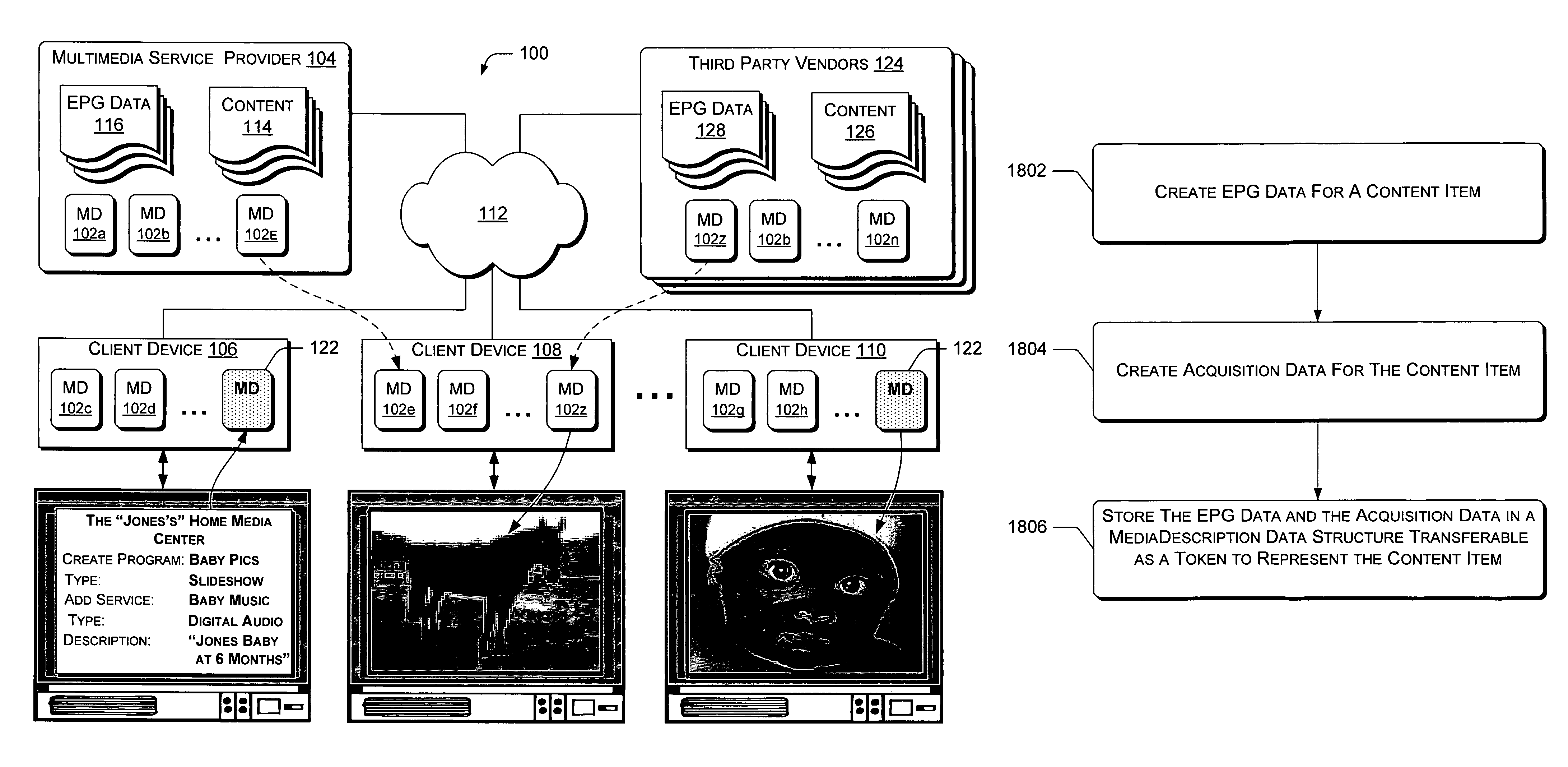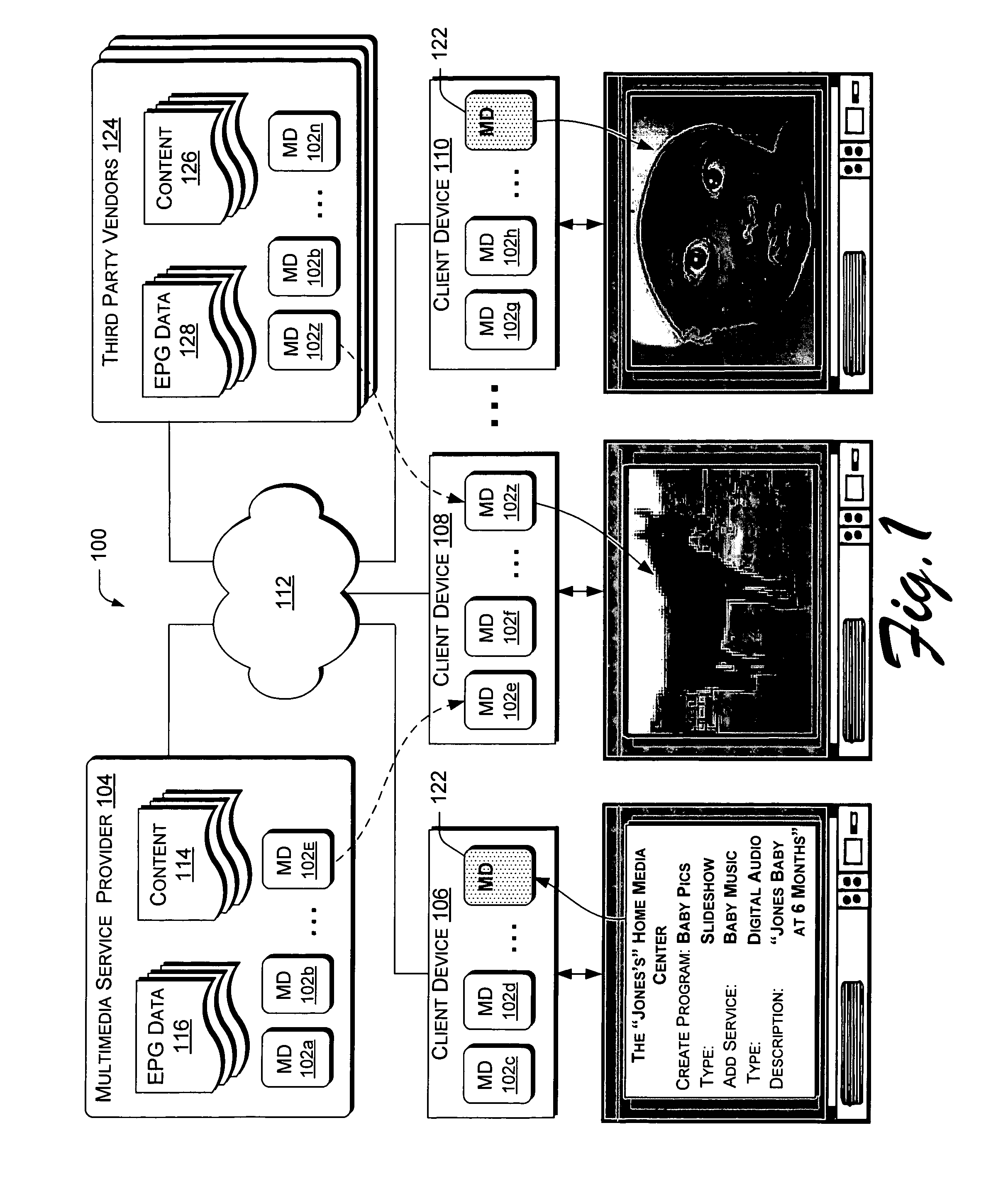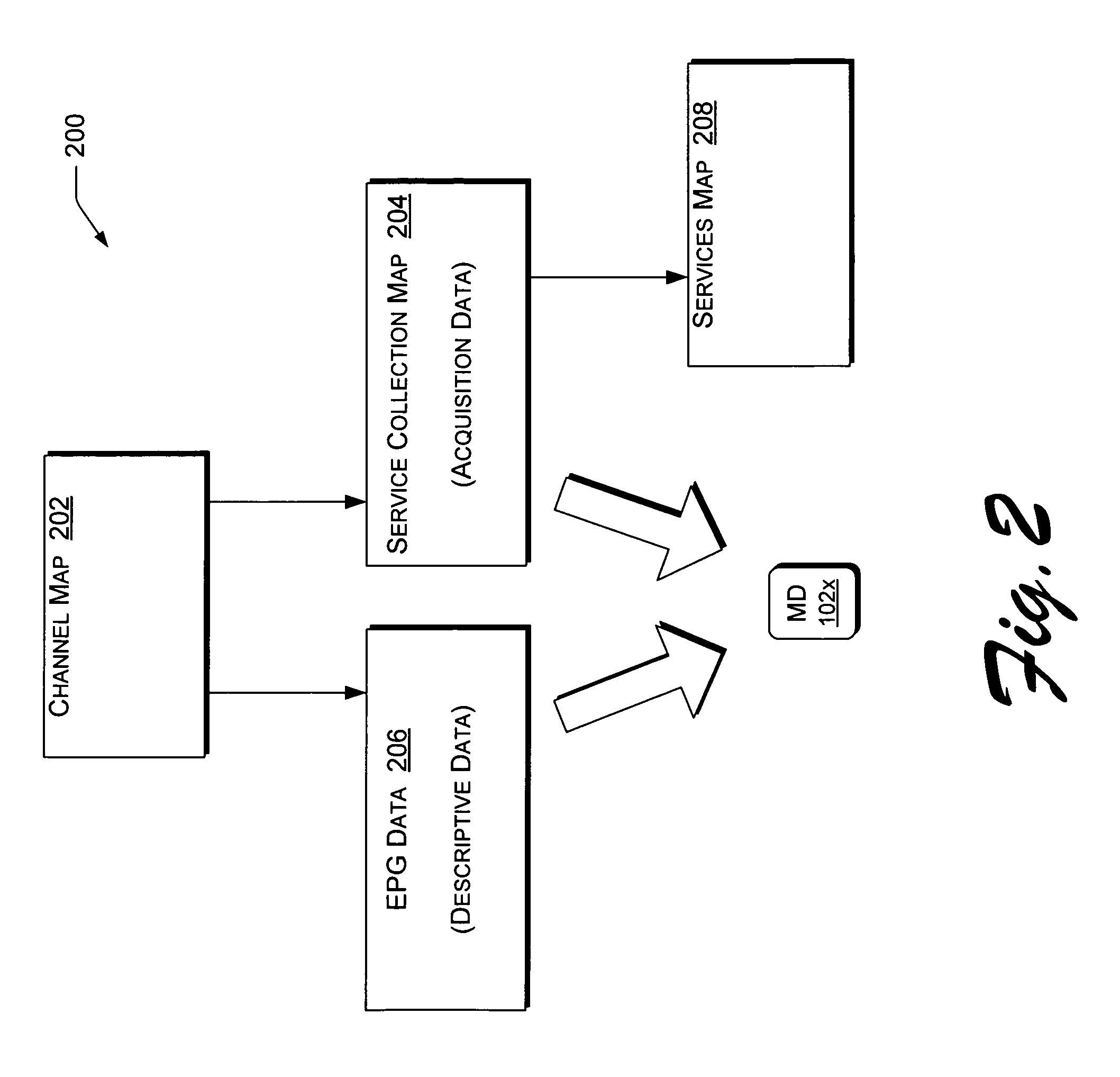MediaDescription data structures for carrying descriptive content metadata and content acquisition data in multimedia systems
a multimedia system and metadata technology, applied in the field of multimedia systems, can solve the problems of complex content delivery techniques, inability to carry information about more general types of content (web pages, flash animations, etc., and achieve the effect of facilitating the process of digital video recording
- Summary
- Abstract
- Description
- Claims
- Application Information
AI Technical Summary
Benefits of technology
Problems solved by technology
Method used
Image
Examples
Embodiment Construction
[0029]Overview
[0030]In an exemplary multimedia system 100 as shown in FIG. 1, a “MediaDescription”102 is a token that provides at least two pieces of information about each multimedia “content item” in the multimedia system 100. A content item can be a program or a program segment. First, a MediaDescription 102 provides a description of the content item, and second, provides acquisition information for obtaining the content item. The descriptive aspect of a MediaDescription 102 can usually be integrated immediately into an electronic program guide (EPG) in the multimedia system 100, while the acquisitive aspect of a MediaDescription 102 can usually be executed by a client device to readily obtain the content. MediaDescriptions 102 provide a universal language for the components of an exemplary multimedia system 100. It should be noted here that the “descriptive metadata” that a MediaDescription 102 can carry or refer to may be EPG data (including, for example, suggested price) and / o...
PUM
 Login to View More
Login to View More Abstract
Description
Claims
Application Information
 Login to View More
Login to View More - R&D
- Intellectual Property
- Life Sciences
- Materials
- Tech Scout
- Unparalleled Data Quality
- Higher Quality Content
- 60% Fewer Hallucinations
Browse by: Latest US Patents, China's latest patents, Technical Efficacy Thesaurus, Application Domain, Technology Topic, Popular Technical Reports.
© 2025 PatSnap. All rights reserved.Legal|Privacy policy|Modern Slavery Act Transparency Statement|Sitemap|About US| Contact US: help@patsnap.com



